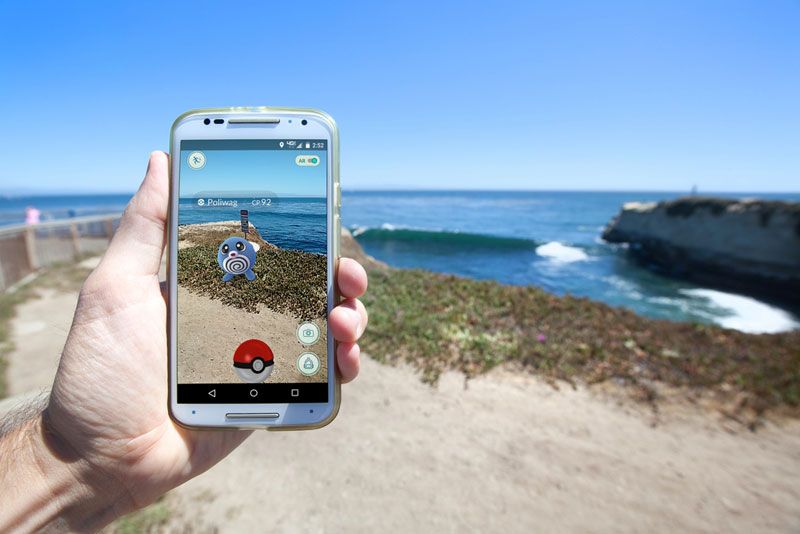What is Augmented Reality?

Augmented reality is the result of using technology to superimpose information — sounds, images and text — on the world we see. Picture the "Minority Report" or "Iron Man" style of interactivity.
Augmented reality vs. virtual reality
This is rather different from virtual reality. Virtual reality means computer-generated environments for you to interact with, and be immersed in. Augmented reality (also known as AR), adds to the reality you would ordinarily see rather than replacing it.
Augmented reality in today's world
Augmented reality is often presented as a kind of futuristic technology, but a form of it has been around for years. For example, the heads-up displays in many fighter aircraft as far back as the 1990s would show information about the attitude, direction and speed of the plane, and only a few years later they could show which objects in the field of view were targets.
In the past decade, various labs and companies have built devices that give us augmented reality. In 2009, the MIT Media Lab's Fluid Interfaces Group presented SixthSense, a device that combined the use of a camera, small projector, smartphone and mirror. The device hangs from the user's chest in a lanyard fashion from the neck. Four sensor devices on the user's fingers can be used to manipulate the images projected by SixthSense.
Google rolled out Google Glass in 2013, moving augmented reality to a more wearable interface; in this case, glasses. It displays on the user's lens screen via a small projector and responds to voice commands, overlaying images, videos and sounds onto the screen. Google pulled Google Glass at the end of December 2015.
As it happens, phones and tablets are the way augmented reality gets into most people's lives. Vito Technology's Star Walk app, for instance, allows a user to point the camera in their tablet or phone at the sky and see the names of stars and planets superimposed on the image. Another app called Layar uses the smartphone's GPS and its camera to collect information about the user's surroundings. It then displays information about nearby restaurants, stores and points of interest.
Some apps for tablets and phones work with other objects as well. Disney Research developed an AR coloring book, in which you color in a character in a conventional (though app-compatible) book and launch the app on the device. The app accesses the camera and uses it to detect which character you are coloring, and uses software to re-create the character in 3D character on the screen.
One of the most popular ways AR has infiltrated everyday life is through mobile games. In 2016, the AR game "Pokémon Go" became a sensation worldwide, with over 100 million estimated users at its peak, according to CNET. It ended up making more than $2 billion and counting, according to Forbes. The game allowed users to see Pokémon characters bouncing around in their own town. The goal was to capture these pocket monsters, then use them to battle others, locally, in AR gyms.
In 2018, "Harry Potter: Hogwarts Mystery" became the mobile AR gaming sensation. The game lets users see the Hogwarts world around them while having the ability to cast spells, use potions and to learn from Hogwarts teachers. As of this writing, the game had around 10 million downloads in the Google Play store.
Researchers are also developing holograms, which can take VR a step further, since holograms can be seen and heard by a crowd of people all at once.
"While research in holography plays an important role in the development of futuristic displays and augmented reality devices, today we are working on many other applications, such as ultrathin and lightweight optical devices for cameras and satellites," researcher Lei Wang, a doctoral student at the ANU Research School of Physics and Engineering, said in a statement.
The future of augmented reality
This doesn't mean that phones and tablets will be the only venue for AR. Research continues apace on including AR functionality in contact lenses, and other wearable devices. The ultimate goal of augmented reality is to create a convenient and natural immersion, so there's a sense that phones and tablets will get replaced, though it isn't clear what those replacements will be. Even glasses might take on a new form, as "smart glasses" are developed for blind people.
Like any new technology, AR has a lot of political and ethical issues. Google Glass, for example, raised privacy concerns. Some worried that conversations might be surreptitiously recorded or pictures snapped, or thought that they might be identified by face recognition software. AR glasses, contacts and more, like the Glass - X and Google Lens, though, are moving ahead in production and sales.
Additional reporting by Alina Bradford, Live Science contributor.
Additional resources
Sign up for the Live Science daily newsletter now
Get the world’s most fascinating discoveries delivered straight to your inbox.













